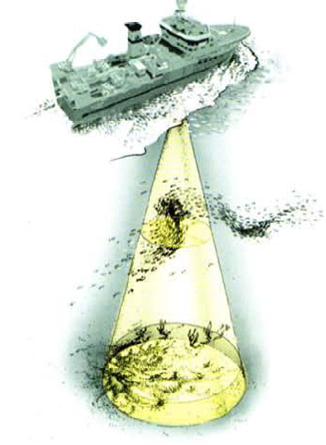Identifying mesopelagic layers combining acoustic data and light avoidance.
Date:
Identifying mesopelagic layers combining acoustic data and light avoidance.
Marian Peña, Jorge Cabrera, and Antonio Domínguez
Although the literature often assumes that all the scattering in oceanic waters can be used as a proxy of mesopelagic species biomass considering a single entity, several acoustic groups with distinct behaviour and spatial distributions inhabit those waters. The acoustic signal has to be previously split into groups in order to properly estimate biomass or to infer behaviour and distributional patterns. Allocating acoustic groups to mesopelagic layers based on net sampling is often not possible due to logistics, the huge water volumes studied, and the need to combine information from different nets. The BATHYPELAGIC survey on board the RV ‘Sarmiento de Gamboa’ in June 2018 accomplished several studies to analyze those layers. Acoustic data were recorded along the 20º W parallel in the North Atlantic, from the 20º N to Reykjavik. Avoidance experiments were also carried out with a camera attached to the rosette in order to classify acoustic layers by means of their frequency response and avoidance reaction. The four different types of layers/echotraces found in this survey will be described. Detection of migrant organisms at the different frequencies and layers will be discussed.
